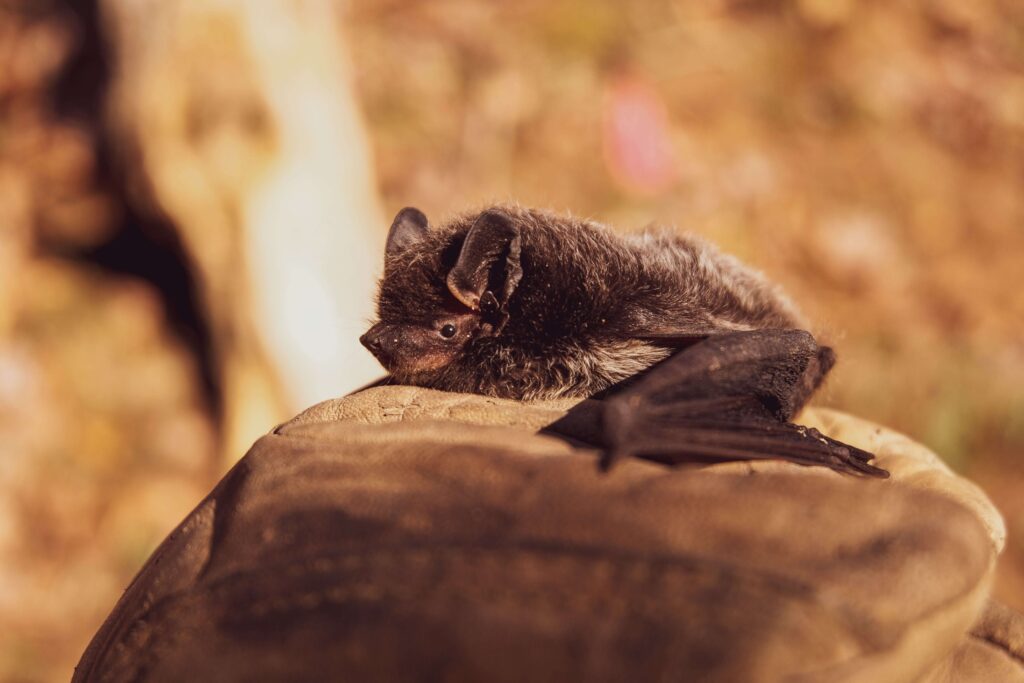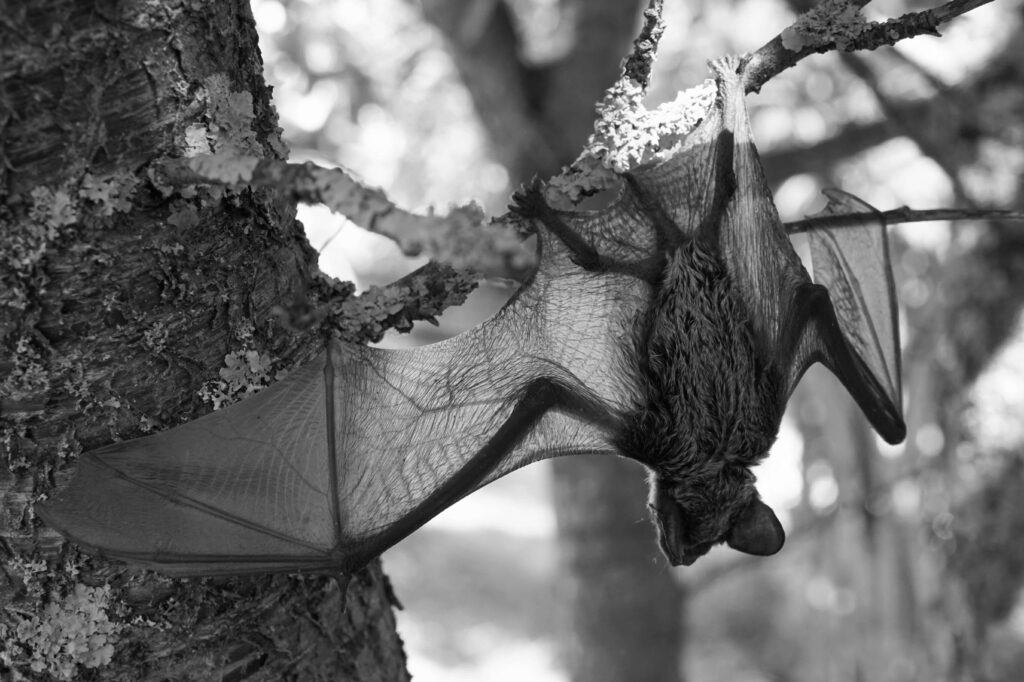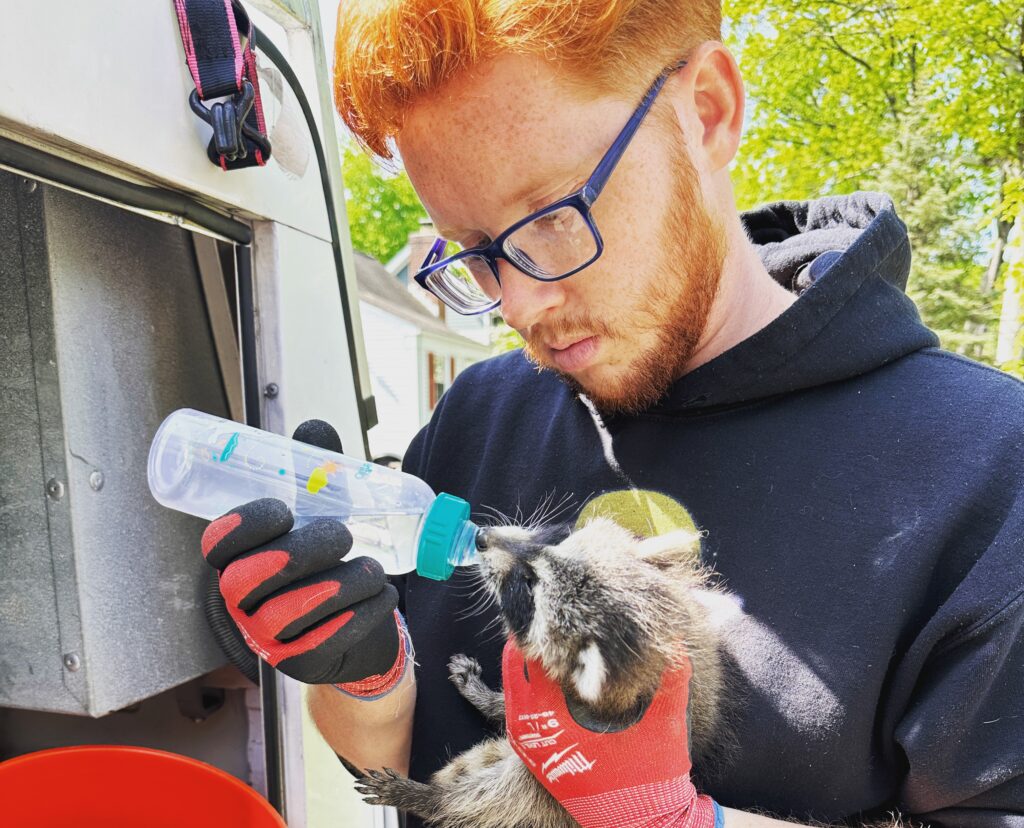Nestled within the diverse landscapes of New Jersey, bats play a crucial yet often overlooked role in maintaining the delicate balance of our local ecosystems. As twilight descends, these elusive creatures take to the skies, weaving through the shadows with remarkable agility. In this article, we delve into the intricate world of “bats in NJ,” exploring their unique attributes, the challenges they face, and the indispensable contributions they make to our environment.
New Jersey, though relatively small in size, boasts a rich tapestry of bat species, each with its distinct characteristics and habitats. From the agile little brown bat to the elusive hoary bat, these winged wonders contribute significantly to the biodiversity of the Garden State. Understanding the nuances of their behavior and ecological roles becomes imperative in safeguarding not only their populations but also the overall health of our ecosystems.
In recent years, the plight of bats in NJ has garnered increased attention due to various challenges they confront. Habitat loss, the pervasive threat of white-nose syndrome, and the unintended consequences of pesticide use pose serious threats to their well-being. Exploring these challenges is essential for developing effective conservation strategies that can ensure the continued presence of these remarkable creatures in our skies.
Key Takeaways
- New Jersey hosts a variety of bat species, contributing to the state's biodiversity.
- Bats play a vital role in insect control, pollination, and seed dispersal, maintaining the health of local ecosystems.
- Bats face threats like habitat loss and white-nose syndrome, requiring conservation efforts.
- Citizen science programs empower locals to monitor and conserve bats.
- Dispelling misconceptions about bats promotes understanding and coexistence.
Diversity of Bats in New Jersey
In the nocturnal tapestry of New Jersey’s skies, a diverse array of bats gracefully navigate the darkness, contributing to the state’s rich biodiversity. These winged inhabitants, collectively known as “bats in NJ,” represent a captivating variety of species, each with its unique traits and ecological niche.
One of the most common bat species in the region is the little brown bat (Myotis lucifugus). Recognizable by its diminutive size and characteristic brown fur, this agile flier is often found roosting in various structures, from caves to buildings. Another notable species is the big brown bat (Eptesicus fuscus), distinguished by its larger size and robust appearance. These bats are adaptable foragers, exploring urban landscapes and rural areas alike in search of insects.
The silver-haired bat (Lasionycteris noctivagans) adds a touch of mystique to New Jersey’s bat diversity with its silver-tipped fur. These solitary creatures often roost in trees and play a vital role in controlling insect populations. The hoary bat (Lasiurus cinereus) is another fascinating resident, easily identified by its frosted appearance. With a penchant for migration, hoary bats travel remarkable distances, contributing to the dynamic nature of the state’s bat population.
These are just a few glimpses into the captivating diversity of bats in NJ. As we explore the various species inhabiting the Garden State, we gain a deeper appreciation for the unique roles each one plays in maintaining the delicate ecological balance of our local environments.
Ecological Importance of Bats
“Bats in NJ” hold a profound ecological significance, acting as silent guardians of the night and contributing invaluably to the delicate balance of our local ecosystems. One of their primary ecological roles lies in the regulation of insect populations. Bats are voracious insectivores, consuming vast numbers of moths, beetles, and other nocturnal insects each night. This natural pest control service not only benefits local agriculture by reducing crop-damaging pests but also minimizes the need for chemical pesticides.
Beyond insect regulation, bats play a crucial role in pollination and seed dispersal. Certain bat species have co-evolved with flowering plants, making them effective pollinators. By transferring pollen from one flower to another as they feed on nectar, bats contribute to the reproduction of numerous plant species. Additionally, the seeds of fruits consumed by bats are often dispersed over wide areas, promoting the growth and diversity of vegetation.
In the context of New Jersey’s ecosystems, bats contribute to the overall health of forests and wetlands by influencing the composition of plant and insect communities. Their nocturnal activities create a ripple effect that resonates throughout the ecosystem, showcasing the interconnectedness of these creatures with the natural world. Understanding and appreciating the ecological importance of bats in NJ is crucial for fostering conservation efforts that ensure the resilience and vitality of our local environments.
Threats and Challenges Facing Bats in NJ
Bats in NJ face a myriad of threats and challenges that jeopardize their populations and the vital ecological services they provide. Among the foremost concerns is habitat loss and fragmentation. As urbanization encroaches on natural landscapes, the places where bats roost and forage diminish, disrupting their ability to find suitable shelter and food sources.
A pervasive threat that has garnered significant attention is white-nose syndrome, a fungal disease that has decimated bat populations across North America. This devastating affliction affects hibernating bats, causing disruptions in their behavior and often leading to mass mortalities. In New Jersey, as in other regions, efforts to combat and mitigate the impacts of white-nose syndrome are crucial for the survival of affected bat species.
Pesticide exposure poses another significant challenge. The unintended consequences of chemical pesticides used in agriculture and pest control can harm bats directly or indirectly by reducing their insect prey. This not only affects the health of individual bats but also disrupts the delicate ecological balance maintained by their insect-consuming activities.
Understanding and addressing these threats is paramount to the conservation of bats in NJ. By recognizing and mitigating the challenges they face, we can work towards ensuring the continued presence of these remarkable creatures in our ecosystems.
Conservation Efforts for Bats in NJ
Efforts to conserve “bats in NJ” are underway, recognizing the crucial role these nocturnal creatures play in maintaining ecological balance. One key aspect of conservation involves the preservation and restoration of suitable habitats. Initiatives focus on safeguarding natural landscapes and creating artificial roosts, ensuring that bats have secure places to rest, breed, and forage.
Community engagement and education are integral components of bat conservation in New Jersey. By fostering awareness and understanding, conservationists aim to dispel myths surrounding bats and garner support for their protection. Educational programs highlight the ecological benefits of bats, emphasizing their role in pest control, pollination, and seed dispersal, fostering a sense of appreciation and coexistence.
Collaboration between governmental agencies, non-profit organizations, and local communities is vital. Conservation efforts benefit from the combined expertise and resources of various stakeholders, working together to address threats such as white-nose syndrome and habitat loss. Implementing and enforcing protective measures, such as regulations on pesticide use, contributes to the overall well-being of bat populations.
These multifaceted conservation strategies reflect a commitment to preserving the diversity and ecological contributions of bats in New Jersey. By promoting habitat conservation, community involvement, and collaborative initiatives, we can ensure a brighter future for these essential members of our local ecosystems.

Myths and Facts about Bats
Unraveling the mysteries surrounding “bats in NJ” involves dispelling common myths and embracing the fascinating facts that define these misunderstood creatures. One prevalent misconception is the belief that all bats are rabid or dangerous. In reality, the vast majority of bats are not carriers of rabies, and they play a crucial role in maintaining ecological balance by controlling insect populations.
Contrary to the myth that bats are blind, these nocturnal creatures actually have excellent eyesight. While some bat species rely on echolocation for navigation, many possess well-developed eyes that help them see in low-light conditions. Understanding the sophisticated adaptations of bats enhances our appreciation for their remarkable abilities.
Another common myth revolves around bats getting entangled in human hair. In truth, bats are highly skilled fliers with the ability to navigate through intricate spaces. The likelihood of a bat getting caught in someone’s hair is extremely rare.
By separating fact from fiction, we pave the way for a more accurate and positive perception of bats in New Jersey. These creatures are not to be feared but rather celebrated for their essential contributions to our ecosystems and the fascinating adaptations that make them such unique members of the animal kingdom.
Citizen Science and Bat Monitoring Programs
Engaging the local community in the study and conservation of “bats in NJ” is a pivotal aspect of wildlife monitoring and preservation efforts. Citizen science initiatives empower individuals to actively contribute to scientific research and data collection, fostering a sense of shared responsibility for the well-being of bat populations in New Jersey.
In recent years, bat monitoring programs have gained momentum, encouraging residents to participate in observing and documenting bat activities. Citizen scientists play a crucial role in monitoring bat roosts, documenting bat species diversity, and even contributing to research on migration patterns. By harnessing the collective power of enthusiastic community members, researchers can gather valuable information that would be challenging to obtain through traditional means.
These programs often provide training and resources to enable participants to identify different bat species, understand their behavior, and use basic monitoring equipment. In New Jersey, citizen scientists are actively involved in tracking the prevalence of white-nose syndrome and contributing to the overall understanding of bat ecology in the state.
Through citizen science and bat monitoring programs, local communities become integral partners in the ongoing conservation efforts, ensuring the sustained health and vitality of bat populations in the Garden State. The collaborative spirit of these initiatives reinforces the notion that the well-being of “bats in NJ” is a shared responsibility, enriching both scientific knowledge and community engagement.
Future Outlook for Bats in NJ
Looking ahead to the future of “bats in NJ,” there are both challenges and opportunities that will shape the destiny of these nocturnal creatures in the Garden State. Climate change stands out as a significant factor with the potential to impact bat populations. Altered weather patterns and temperature fluctuations could influence the distribution of insects, a primary food source for bats, posing challenges to their foraging patterns.
Ongoing research is essential for understanding the adaptive strategies that bats may employ in response to environmental changes. By staying attuned to these dynamics, conservation efforts can be tailored to address emerging threats and ensure the resilience of bat populations in New Jersey.
The collaborative efforts of researchers, conservationists, and the community are crucial for shaping a positive future for bats. Implementing and expanding upon existing conservation strategies, such as habitat preservation and public education, will play a pivotal role in fostering coexistence and appreciation for these vital contributors to the ecosystem.
As we navigate the complexities of the future, fostering a proactive approach to conservation and staying vigilant to emerging challenges will be key to securing a thriving environment for “bats in NJ.” By working together, we can ensure that these nocturnal inhabitants continue to grace our skies and contribute to the ecological harmony of the Garden State.
FAQs
Why are bats important in New Jersey?
Are all bats in New Jersey carriers of diseases like rabies?
Are all bats in New Jersey carriers of diseases like rabies?
No, the majority of bats in New Jersey are not carriers of rabies. While it’s essential to exercise caution around any wild animal, most bats do not pose a direct threat to human health.
What is white-nose syndrome, and how does it affect bats in NJ?
White-nose syndrome is a fungal disease that affects hibernating bats. It has led to significant declines in bat populations in New Jersey, impacting their ability to survive through winter.
How can I help conserve bats in New Jersey?
You can contribute by supporting habitat preservation, participating in citizen science programs, and promoting awareness about the ecological importance of bats in your community.
Do bats in New Jersey pose a risk to humans?
Bats typically avoid contact with humans. While it’s important to avoid handling bats due to the risk of disease transmission, most bats in New Jersey are not aggressive and play a vital role in pest control.
Conclusion
In conclusion, the nocturnal skies of New Jersey are intricately woven with the presence of bats. These fascinating creatures, collectively known as “bats in NJ,” contribute immeasurably to the ecological tapestry of the Garden State. From their diverse species to their pivotal role in insect control, pollination, and seed dispersal, bats are silent but indispensable stewards of our local environments.
However, as we marvel at their significance, it is essential to acknowledge the challenges they face. Habitat loss, the looming threat of white-nose syndrome, and the unintended consequences of pesticide use underscore the urgency of concerted conservation efforts.
Yet, the future for bats in NJ holds promise. Collaborative initiatives, including citizen science programs and community engagement, empower individuals to actively contribute to bat monitoring and preservation. By dispelling myths and fostering understanding, we pave the way for a positive coexistence between humans and bats.
As we look to the future, the resilience of “bats in NJ” hinges on our collective commitment to conservation, education, and adaptation. With continued efforts, we can ensure that these nocturnal inhabitants continue to grace our skies, contributing to the vibrancy and health of New Jersey’s diverse ecosystems.


